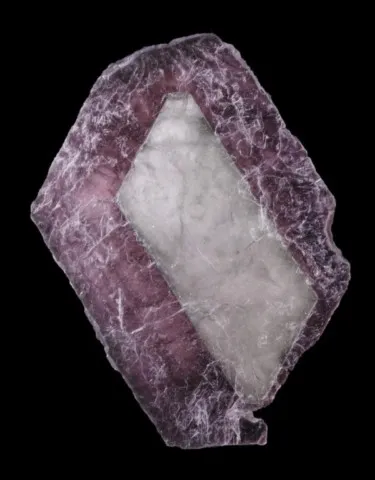LEPIDOLITE
Class : Silicates
Subclass : Phyllosilicates
Crystal System : Monoclinic
Chemistry : K(Li,Al)3(Si,Al)4O10(F,OH)2
Rarity : Quite common
Lepidolite belongs to the micas group. It is a micas typical of granites and pegmatites rich in sodium and lithium (sodolithic), in which it is frequently associated with albite (cleavelandite) and rubellite, sometimes with cassiterite. It may contain significant quantities of rubidium and cesium (up to 5%) and fluorine (8%). It is a mineral that owes its name to the Greek lepidos (scale), because of its structure in leaflets. Lepidolite forms massive aggregates of fine flakes, more rarely single crystals with hexagonal or rhombic contours that do not exceed 20 cm. Its pink-lilac to purple color is characteristic, but yellow, gray or green specimens are also known. It is an important lithium ore, it can sometimes be used directly in the manufacture of glasses and enamels. It is also an ornamental stone that can be cut in cabochon for jewelery.
Main photo : Lepidolite from Barra de Salinas, Minas Gerais, Brazil
Lepidolite in the World
Lepidolite in France
Fakes and scams
Hardness : 2.5 to 3.5
Density : 2.8 to 2.9
Fracture : Micaceous
Streak : White
TP : Translucent to transparent
IR : 1.551 to 1.587
Birefringence : 0.029 to 0.038
Optical character : Biaxial -
Pleochroism : Low
Fluorescence : Sometimes green
Solubility : Acids
Magnetism : Paramagnetic
Radioactivity : None





